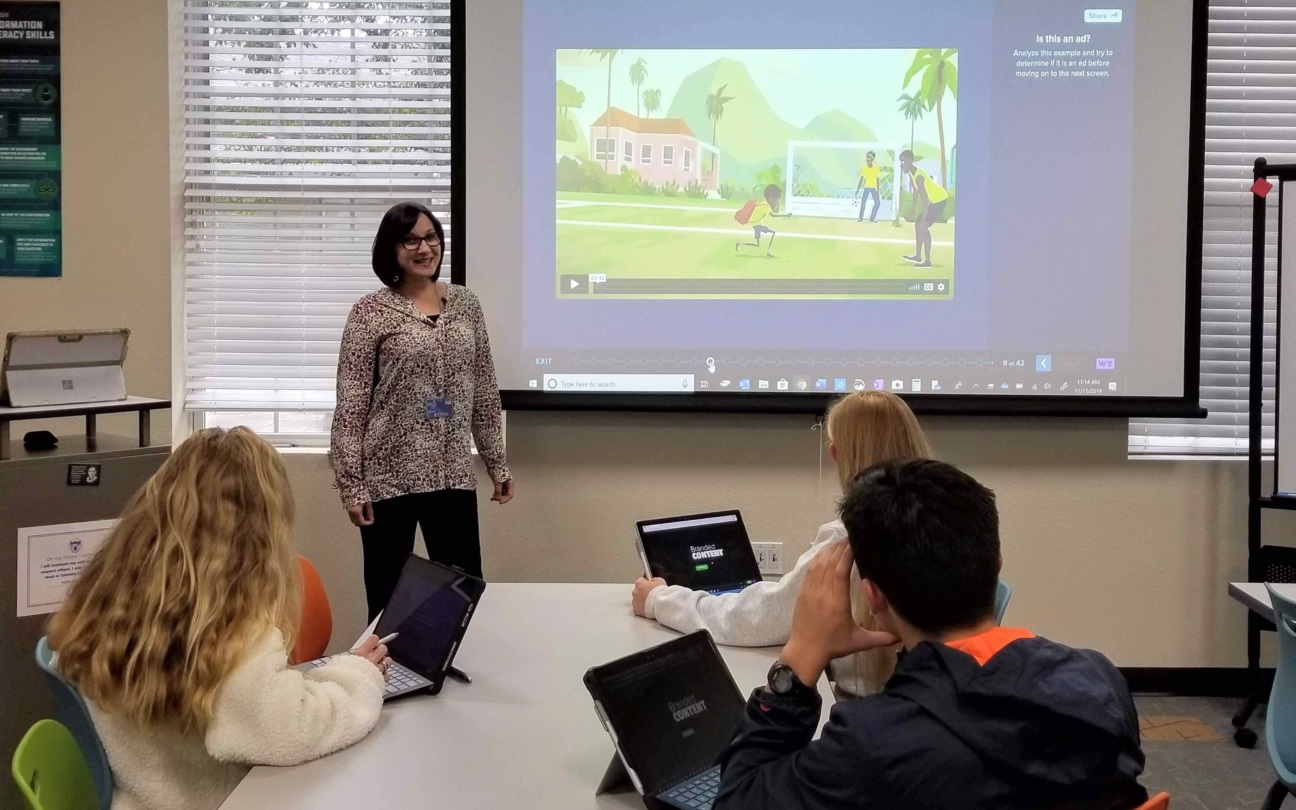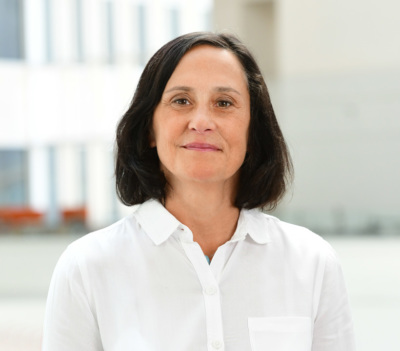
More Info
Jaime Sanborn uses Checkology to teach research skills to her Information Literacy students at The Bolles School in Jacksonville, Florida.
Photo credit: Mindy Kelly, dean of students, The Bolles School
School librarian calls Checkology ‘priceless’ for teaching research skills
You might be surprised to learn what has students buzzing in the hallways of The Bolles School, a private school in Jacksonville, Florida.
It’s Jaime Sanborn’s Information Literacy course. Here’s what she has overheard them saying:
“What is Ms. Sanborn teaching?”
“She’s teaching us how to research. She’s teaching us how to think for ourselves.”
Sanborn, the middle school librarian at Bolles, is using NLP’s Checkology® virtual classroom in the semester-long research-driven elective that she is piloting this semester with seventh- and eighth-graders. She said that when she learned about the platform from other school librarians last year, she thought: “This is exactly what I want to teach them.”
Speaking her language
And Checkology speaks the language of librarians. “‘InfoZones’” — one of the platform’s foundational lessons — “is priceless. It is very similar to how librarians would teach source evaluation,” said Sanborn, who introduced a few Checkology lessons to sixth-graders in the 2018-19 school year.
“Every child is being influenced by social media as a source of information, not just entertainment, so I have to teach them how to navigate that. They believe everything they see,” she said.
So Sanborn might ask them: “You read this on Twitter. What makes this true? How can you verify it?” Reinforcing Checkology lessons with quizzes and related material, she reminds them to look for nuance, check sources and be mindful of language signaling that what they are reading, watching or hearing has a particular slant or is propaganda. She rounds out the Checkology component of her course with the “Misinformation,” “Introduction to Algorithms,” “Arguments & Evidence,” “The First Amendment,” “Branded Content” and “Understanding Bias” lessons.
Evaluating credibility
Sanborn wants students to understand that the internet is manipulating them through branded content (advertising designed to resemble news), algorithms that filter and narrow what they see, and viral memes rife with false, and often provocative, information. She stresses to her students that they must learn to find and evaluate the credibility of sources and content: “You are responsible for determining what is valuable and what is truth,” she tells them.
For students who aren’t yet using social media, the course is an eye-opener. “They can’t believe it when they see what is out there,” Sanborn said. “When they do get on social media, they will know what to expect and how to navigate it.”
Research skills for the real world
The internet, she reminds them, is a microcosm of society: “Think about the good and bad you see in the real world. All of what you see online is represented in the real world. You have to use the same life skills online and off.”
And her students are using what they are learning from Checkology every day. “They tell me that they have begun applying these skills when they are consuming news outside of the classroom,” Sanborn said.
It’s important to teach news literacy skills early, she said, noting how susceptible we all can be to confirmation bias — seeking information that simply reaffirms what we already believe.
“People don’t want to be uncomfortable,” she said of our disinclination to consider information that counters our beliefs. “Teaching kids at a young age is essential for them as researchers and participants in democracy.”
